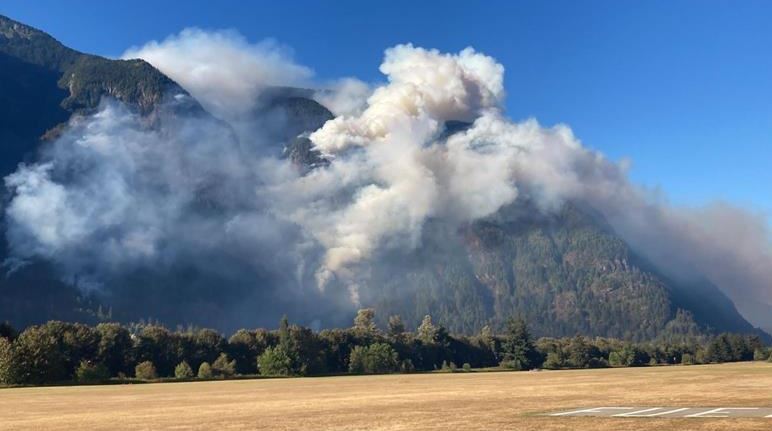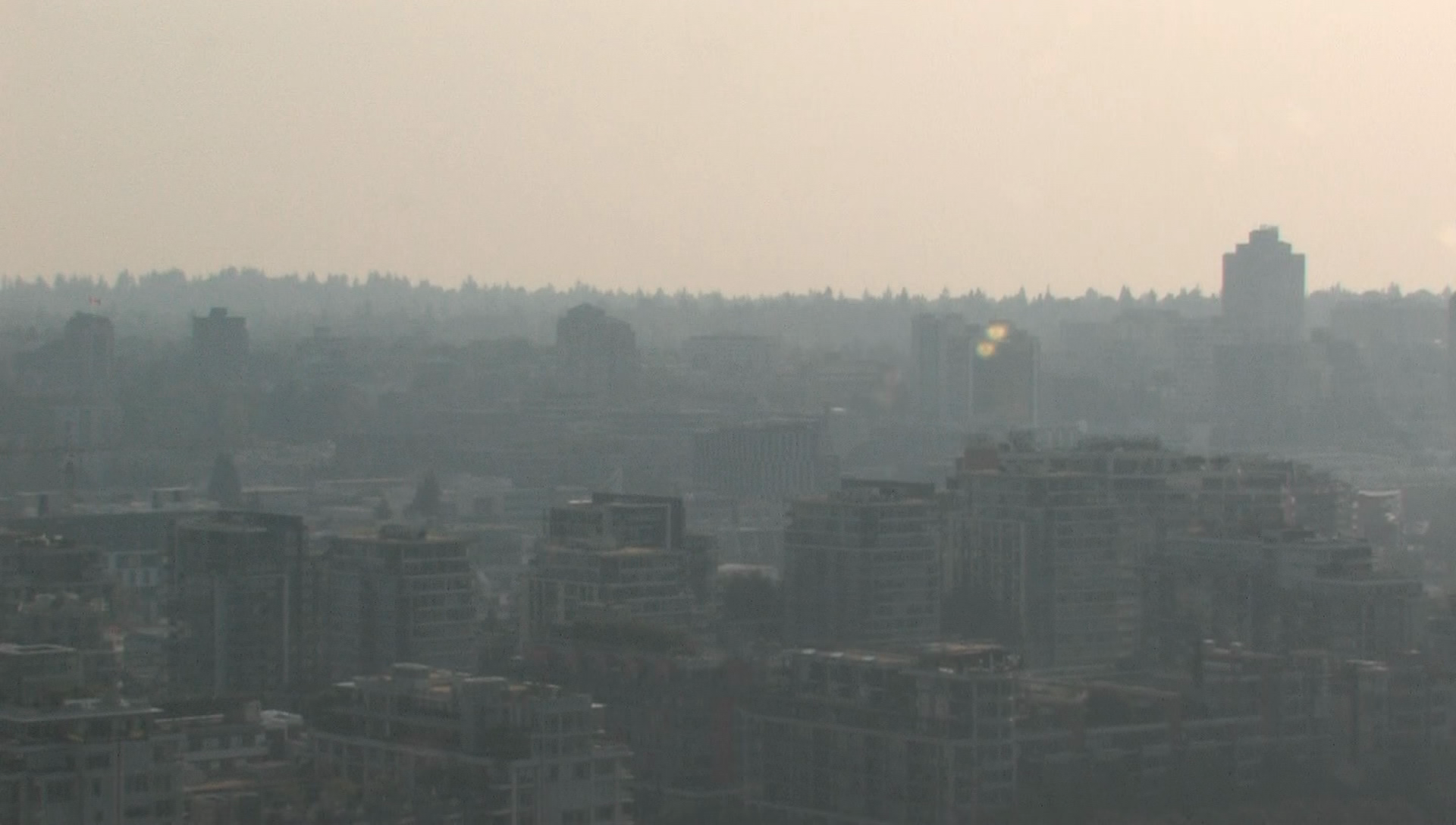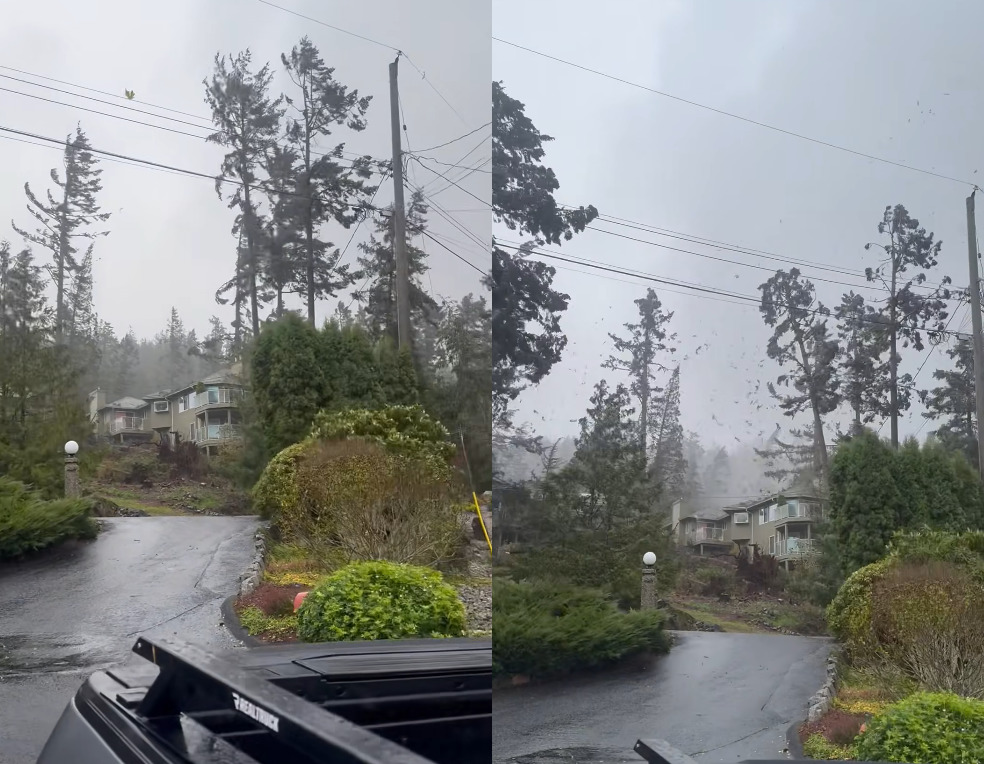Metro Vancouver air quality varies amid ongoing wildfires
Posted September 12, 2022 7:16 am.
Last Updated September 12, 2022 8:06 pm.
The air quality across Metro Vancouver and the Fraser Valley is no longer the worst in the world, but conditions remain smoky due to wildfires burning in B.C. and the U.S.
There is some relief for some areas. However, things could get worse for other parts of the region before it gets better.
The air quality index reading for the Eastern Fraser Valley Monday morning remains high, with Environment and Climate Change Canada (ECCC) noting conditions there are “Very High Risk.” People in the Chilliwack, Agassiz, Hope, and surrounding area are told to “reduce or reschedule strenuous activities outdoors,” especially if they start experiencing symptoms like an itchy throat or cough.

FILE – The Flood Falls Trail wildfire near Hope pictured on Sept. 10, 2022. (Courtesy BC Wildfire Service)
At-risk people are told to “avoid strenuous activities outdoors.” ECCC adds children and the elderly should avoid any physical exertion outside.
Conditions are better in the Central Fraser Valley, encompassing Abbotsford and Mission, where a “Moderate Risk” is in place. ECCC says the air quality there is “ideal” for outdoor activities, with no warnings for at-risk populations.
When it comes to Metro Vancouver, the northern sections — including the North Shore, Vancouver, through to the Tri Cities and Maple Ridge — are currently listed at “Moderate Risk,” while the southern areas — including part of Richmond and other municipalities south of the Fraser — are “Low Risk.”
“We currently have an air quality advisory in place for all of Metro Vancouver and the Fraser Valley and we expect that that will likely have to continue for today,” explained Kyle Howe, an air quality analyst with the Metro Vancouver regional district.
“We are seeing a gradual improvement in ground level fine particulate matter concentrations but still above our air quality objectives.”
Related articles:
-
Wildfire smoke affecting air quality across B.C.
-
Wildfires across B.C. causing evacuation alerts and orders
-
New wildfire burning near Highway 1, southwest of Hope
Howe notes the situation currently is “complex,” adding while some wind is helping clear western and southern portions of the region.
However, the Fraser Valley continues to see “significant concentrations of fine particulate matter.”
“And they are dealing with a wildfire out in Hope that is going to continue to, potentially, impact the local air quality there. So we expect a clearing trend to begin in sort of the western and southern portions of the region and slowly make its way east. But it’s unclear if it will be significant enough today for us to do anything about the air quality advisory,” he said Monday.
The conditions Monday come after Vancouver was listed as having the worst air quality reading across the globe. The World Air Quality Index said conditions put Vancouver into ‘unhealthy’ territory, amid the spread of wildfire smoke.
“We expected a late fire season and sure enough that’s what we’re looking at right now,” explained CityNews Meteorologist Michael Kuss Monday.
“Conditions over the next couple of days still conducive to seeing smoke in and out of the area across the Lower Mainland, all the way through.”

Smoky skies as seen in Vancouver on Sunday September 11th, 2022. (CityNews Image)
Kuss says with many wildfires “burning in relatively close proximity,” there’s a chance we’ll continue to see smoke in the Lower Mainland throughout the week.
“It will take some precipitation to really put down that smoke across the area and reduce the possibility of smoke across the Lower Mainland — and that’s not in the forecast until at least Friday,” he added, noting before any rain comes, we’ll likely see some wind.
“The way the pattern is setting up, we have the potential to see easterly winds or even south easterly winds on and off for the next few days and that’s where the fires are burning. So the potential is there to see smoke all the way back to the coast in and out through that stretch, potentially taking us through Thursday.”
Vancouver B.C. has the worst air quality in the world right now, according to the World Air Quality Index.@CityNewsVAN pic.twitter.com/ikyTIrrYbn
— Robyn Crawford (@robyncrawford_) September 11, 2022
As smoky conditions have set in, many people have opted to wear face masks to try to get some relief while outdoors.
The BC Centre for Disease Control notes “well-fitted respirators offer the most effective protection from fine particulate matter.” That includes masks like N95s, KN95s, and KF94s. Three-layer cloth or disposable masks offer less protection, while single layer masks “offer no protection.”
The BCCDC says “the best way to protect your health from wildfire smoke is to seek cleaner air.”
“We advise that people, especially those that are at higher risk — so that would be people with underlying conditions like lung or heart disease, obstructive pulmonary diseases, asthma, or pregnant people — kind of take it easy, they seek shelter indoors and air conditioning with HEPA filtration, and if they are experiencing any health related issues that they contact their medical professionals,” Howe added.
“Smoke is mostly composed of fine particulate matter and the problem with this is these particles are so small that they can penetrate very deem in the respiratory system and cause issues,” Howe told CityNews, adding it’s “very important to listen to your body.”
Wildfires burning in parts of B.C. include the Battleship Mountain fire, around Hudson’s Hope in central B.C. Meanwhile, another large fire is burning along the Canada-U.S. border near Manning Park.








